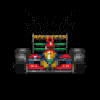There is a problem with aerodynamic bounce, with teams trying to flex the bottom to maximize ground effect. The pre-season of the new era of Formula 1 has officially begun. The only thing missing was the Red Bull RB18. Now we know for sure: the new cars are a complete break from what we've been used to seeing in recent seasons.
Bulkier nose and bellies, front wings more raised from the ground, more compact rear vents and, above all, mechanics, on several cars, completely overturned.
F1 2022: ground effect does not only bring advantages
This 2022 season must be seen as a new beginning. Teams will still be able to take advantage of previous knowledge and, to some extent, old aerodynamic concepts, but they will have to apply them in a rather different way.
We have defined them as "ground effect" single-seaters, because the bottom of the car will have two long "converging-diverging" tunnels that, through the Venturi effect, will glue them to the ground. The way in which cars generate aerodynamic load has been totally modified. It will count more the bottom and less the ailerons.
This will lead to a significant increase in the efficiency of the cars. The new cars will therefore be faster in a straight line, at the level of the previous generation in fast corners, while the understeer and the 795 kg, will put them in more difficulty in the mixed and slow.
However, the ground effect also has criticalities. One of these is the risk that the car, once it has passed a certain speed, begins to bounce. A phenomenon deriving from an accentuated aerodynamic instability due to important problems of airflow separation.
As far as Formu1a.uno understands, this is what happened to at least one team on the filming day, used to wean off the new single-seater, and to Alfa Romeo on the morning of the first day of pre-season testing.
To the particular team that suffered during the filming day carried out last week, the phenomenon occurred beyond 250 km/h. The car was as if it went into resonance, starting to jump and also leading to problems with cracks in the lower part of the bottom.
F1 2022: teams try to make the bottom flex at high speeds
Teams are trying to run as close to the asphalt as possible, especially at high speeds, to maximize ground effect. However, it's a very efficient load-generating phenomenon but can be extremely sensitive to pitch, yaw and roll of the car.
To seal the outside of the bottom even more and to try to recreate an effect similar to the mini-skirts in the wing cars of the 1980s, teams are trying to flex the outer parts of the bottom. Getting too close to the ground, however, poses major risks of flow separation.
One engineer let us know that on this new generation of cars, a change of even a few mm in ground clearance in the fast setting results in a drastic decrease in downforce.
If the flow were to detach, with a loss of aerodynamic load, the car would tend to rise because the springs would no longer be compressed by the vertical thrust generated by the aerodynamic load. The car rising, would favor again the flow reattachment and therefore an increase in the generation of aerodynamic load. The car would be again closer to the ground. This would cause a new separation and so on with a car that would continue to bounce. This has happened to at least two teams.
The team that had this problem during the filming day, managed today to contain it thanks to a stiffening in the outer part of the bottom and working on the mechanical setup.
Author: Piergiuseppe Donadoni
Translated with
www.DeepL.com/Translator (free version)

